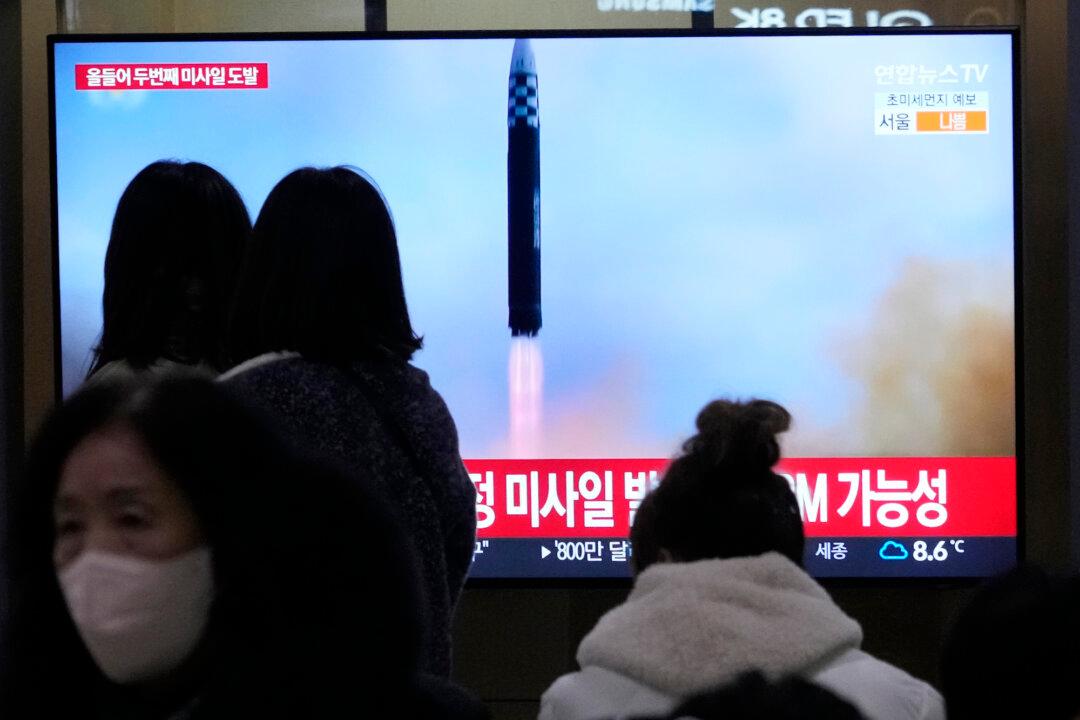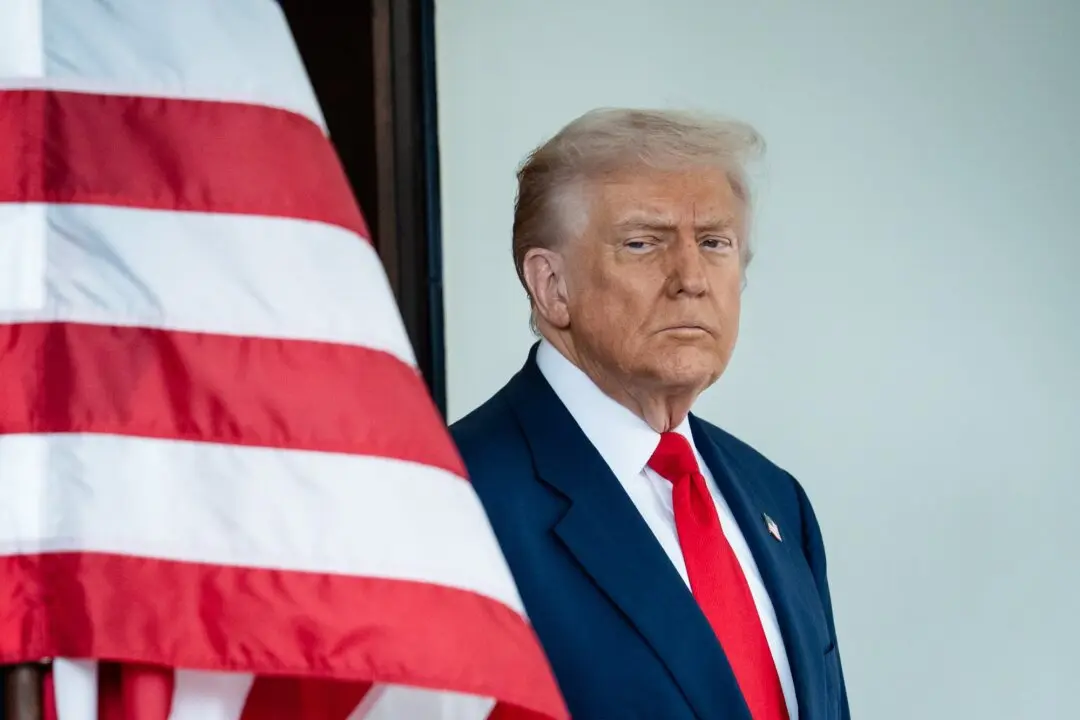North Korea on Saturday fired an intercontinental ballistic missile that landed in waters within Japan’s exclusive economic zone, according to Japanese and South Korean officials, after Pyongyang warned that upcoming U.S.-South Korea military drills would lead to a strong response.
Japan government spokesman Hirokazu Matsuno told reporters on Feb. 18 that North Korea “fired one ICBM-class ballistic missile” which flew for some 66 minutes before landing in Japan’s exclusive economic zone.





